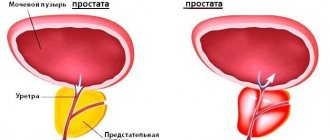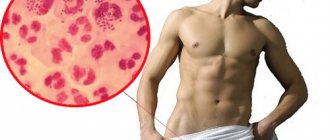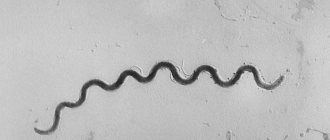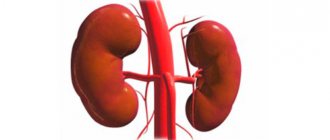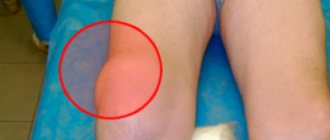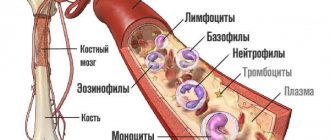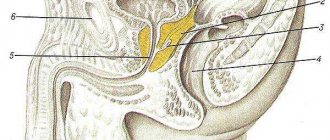Varicocele is a varicose vein in the spermatic cord. The disorder does not occur spontaneously: the development of the disease is preceded by the regular influence of unfavorable factors. Pathology is often encountered during reproductive age. The symptoms that manifest varicocele in men resemble those of an inguinal hernia, renal colic, prostatitis and other diseases. If there is discomfort in the scrotum, you need to see a doctor and get examined without self-medicating. Using traditional medicine recipes is ineffective. The blood supply to the testicle is restored mainly surgically.
Statistics
Due to the anatomical features of the veins in the testicular area, varicocele most often forms on the left side. 80-95% are allocated to these cases. Right-sided testicular varicose veins are not so common (up to 8%). On both sides, varicocele occurs in 2-12 cases out of a hundred. Male disease is “linked” to the age of the patients. A large percentage (19) of problems with testicular veins are noted by doctors in adolescents. If we consider the reproductive age of men, then the statistics of varicose veins reach 35%. These are sad numbers, because... Varicocele in sexually mature men can cause infertility. Treatment of the disease should begin at the earliest stages.
Epidemiology
Most early epidemiological studies of varicocele among males (military recruits, adolescents and schoolchildren) showed the prevalence of the disease to be about 15%.
In addition, experts were unable to confirm that the determining factor for the dilation of the veins of the pampiniform plexus is age. Subsequent epidemiological studies showed that varicoceles develop during the period of growing up and physiological changes in the body of young men. Dr. Oster published a study in the medical journal Acta Paediatrica in 1970 in which he could not detect any testicular disease among 188 boys aged 6 to 9 years. But he discovered a tendency for the development of varicocele in boys aged 10 to 14 years, which convincingly proves the factor in the development of the disease during puberty. In 2000, Dr. Akbay and others from Mersin University (Turkey) assessed the prevalence of varicocele among 4,052 boys aged 2 to 19 years. According to their data, the prevalence of the disease was less than 1% in boys aged 2-10 years, 7.8% in boys aged 11-14 years and 14.1% in boys aged 15-19 years. These epidemiological observations indicate that the venous insufficiency inherent in varicoceles primarily manifests itself during testicular development.
More recent studies suggest that the prevalence of varicocele in adult men is related to age. Dr. Levinger from the Medical Center. Rabin in 2007 estimated the age-related prevalence of varicocele in men over 30 years of age. Of the 504 men, 34.7% were diagnosed with the disease during a medical examination. Upon further analysis, experts found that the prevalence of varicoceles increases by approximately 10% for every ten years of life. Prevalence was 18% in those aged 30-39, 24% in those aged 40-49, 33% in those aged 50-59, 42% in those aged 60-69, 53% in those aged 70-79 and 75% in those aged 80 -89.
The prevalence of varicocele in men with problems with the reproductive system ranges from 25 to 35%. In 1992, the World Health Organization (WHO) conducted an extensive study in which specialists from 34 medical centers around the world examined a total of more than 9,000 men. Result: 25.4% of men with abnormal sperm morphology had varicocele, while 11.7% of men had a normal spermogram.
What does it look like
A photo of a varicocele clearly demonstrates a male problem - the scrotum on one side (usually the left) is slightly lower. The skin covering the testicle does not hide the contours of the veins. When self-palpating the venous vessels, a man can feel their expansion. The patient may not even be aware of other symptoms of the disease. Palpation of the scrotum and visual examination are necessary actions for all men who care about their health. This is especially true for males planning fatherhood. You need to be regularly examined by a urologist. Medical examinations and consultations with qualified specialists are offered by the Global Clinic Center, which has extensive experience in the treatment of varicocele.
Prevention
By following certain preventive measures, you can minimize the risk of development and recurrence of varicocele:
- eat right, eat foods that have a beneficial effect on the intestines, take vitamins;
- avoid heavy physical activity;
- Use protection measures during sexual intercourse.
Since the disease is often a hereditary disease, you should undergo regular examinations with doctors , starting from adolescence. With timely detection and diagnosis, it will be possible to cure varicocele without surgery.
History of the disease
Varicocele is a disease with deep historical roots. The first mention of the problem dates back to the 16th century and is associated with the name of Paré, a famous surgeon of the Renaissance. He drew attention to the pathology of the venous vessels near the male testicle. Many medical historians speak of the involvement of Hippocrates and Celsius in establishing the facts about this problem. The topic of varicocele is very closely related to infertility. In the 19th and 20th centuries, scientists confirmed the possibility of curing male infertility in direct proportion to the elimination of testicular varicose veins.
Establishing diagnosis
To make it clear to doctors all over the world what diagnosis was made, they came up with the encryption of diseases. The code consists of Latin letters and numbers. In this case, the first number summarizes the group of diseases, and the second, after the dot, specifies its location, stage, etc.
For varicocele according to ICD 10, the code is: I86.I. If you decipher it, it turns out that I86 is varicose veins, and the Latin letter “I” indicates the place where the pathology arose - the scrotum.
Thus, the clinical diagnosis may sound like this:
- Left-sided varicocele, grade 3, decompensated stage. Hypotrophy of the left testicle. Dropsy on the left.
- Right-sided varicocele, grade 2. Compensation stage. Infertility. Oligozoospermia 2nd degree.
Identified complications are always indicated when formulating a clinical diagnosis.
Inspection and palpation
As mentioned above, upon examination the following changes may be revealed:
- dilated veins of the pampiniform plexus, visible through the skin;
- change in the normal direction of vascular branches;
- cyanosis of blood vessels;
- the presence of areas overflowing with blood;
- swelling of the scrotum on the affected side;
- decrease in testicle size;
- change in the consistency of the testicle: it is softer than the neighboring one.
If the doctor doubts the diagnosis, he asks the man to perform the Valsalva maneuver. To do this, you need to cough or simply tense your stomach. The test is considered positive if the veins increase in diameter after an increase in intra-abdominal pressure. This is determined visually and by palpation.
Despite the fact that the symptoms of varicose veins may only bother one side, the doctor always evaluates the condition of the second testicle. It is extremely rare, but cases of a bilateral process are still identified.
Laboratory diagnostics
There are no specific tests to establish a diagnosis. If a diagnosis has already been made, the doctor may recommend a spermogram to make sure that the function of the testicles is not impaired. Those who complain of infertility can get the following spermogram results:
- oligospermia – small volume of ejaculate,
- teratozoospermia – a large number of abnormal forms of sperm,
- oligozoospermia – few sperm,
- azoospermia – there are no sperm in the ejaculate,
- asthenozoospermia – reduced sperm motility,
- necrozoospermia – dead spermatozoa are found in the ejaculate.
Typically, changes in sperm occur in advanced cases, when a man has been living with the disease for a long time and there are dystrophic changes in the testicles. However, the presence of pathology does not always lead to a change in the spermogram; it is important to remember this. In cases where infertility is associated only with varicocele, the doctor recommends surgical intervention.
To exclude a concomitant inflammatory process, the doctor prescribes a general analysis of urine, blood, and microscopy of prostate secretions. These examinations are performed according to indications or before surgical treatment.
A blood coagulation examination may be recommended. This is necessary for choosing a treatment method.
In older patients, a hormonal profile study can be performed. As is known, many hormones affect vascular tone. If there is a deficiency, it is likely to be the cause of varicose veins.
The value of Dopplerography
The gold standard for examination is Doppler ultrasound. This method has a number of advantages, including:
- availability;
- high accuracy of research;
- simplicity;
- the ability to assess blood flow;
- determination of concomitant pathologies in the scrotum (orchitis, epididymitis);
- the ability to determine the type of venous discharge;
- possibility of assessing the structure of the testicle.
Thus, even if the doctor did not reveal any problems during the examination, an ultrasound scan detects varicocele in the early stages. This makes it possible to monitor the patient and take the necessary measures in a timely manner.
The criteria for diagnosis are excessive tortuosity of the vessels, their dilation of more than 3 mm at the level of the inguinal ring or more than 2 mm in the area of the lower pole of the testicle.
As you know, varicose veins are a disease of more than one vessel. It finds weak points in the body and attacks them, especially the lower limbs. If a man is diagnosed with a varicocele, he needs to rule out the expansion of vascular formations in the legs, phlebitis, and thrombosis. Using a Doppler ultrasound sensor, this can be done immediately after examining the scrotum.
Other diagnostic methods
Magnetic resonance imaging is an expensive, highly accurate diagnostic method. Used for varicocele, if there is a suspicion of a malignant process or thrombosis. MRI is good at identifying soft tissue formations, including blood vessels and blood clots.
Varicocele. Symptoms
The danger of the first stages of the disease is that it is asymptomatic. The problem is discovered by chance, during medical examinations or when patients address other male issues (for example, in connection with infertility). Symptoms of varicocele characteristic of other degrees of the disease:
- nagging pain and discomfort in the left side of the scrotum, testicle and groin area;
- drooping left (mostly) testicle, interfering with walking;
- decrease in the size of the testicle on the left;
- manifestation of the contours of venous vessels;
- appearance of pain.
Varicocele is characterized by symptoms manifested in a decrease in the number of sperm and a decrease in their motility, in this case it is worth talking about male infertility. When doctors try to find out the cause of male infertility and analyze various symptoms in a patient, they often discover a varicocele, using the most modern diagnostic methods.
Recovery after varicocele surgery
As a rule, it takes 5-10 days for a man’s body to recover after surgery to eliminate varicocele. In the first two days it is not recommended to do anything at all. It is advisable to spend this time in bed. In addition, in the postoperative period it is advisable to exclude any physical activity.
You can return to a normal lifestyle, as well as to playing sports, after two weeks after the operation. It is advisable to gradually increase the load and carefully monitor the condition of your body. If there is any deterioration or if pain occurs, you should immediately stop playing sports.
During the week after surgery, a man is prohibited from lifting weights exceeding 4.5 kilograms. In addition, you should not take a bath or visit a bathhouse or sauna for at least 5 days after surgery. Bandages that will be applied to the patient immediately after surgery should not be wet or removed for two days. Next, the doctor will inform you about the schedule for dressings, if they are necessary.
After two days from the day of surgery, you need to gradually start moving. It is not recommended to lie in one place all the time; this can lead to the development of constipation and other digestive problems. In addition, it is advisable to eat soft, low-fat and light foods in the first days. Of course, sexual relations in the postoperative period are completely excluded.
Causes and risk factors for the disease
In the veins surrounding the spermatic cord, a malfunction of the valve occurs, which prevents blood from flowing back. Instead of rising upward, the blood stagnates, because... is transmitted in the opposite direction. Because of this, the venous vessels become dilated and weak. The causes and risk factors of varicocele are associated with the appearance of primary and secondary reflux. The abnormal structure of the veins associated with congenital pathology leads to the complete absence of valves for the reverse outflow of blood or their atypical operation. During puberty, blood pressure on the vessels increases, and varicose changes occur in the veins near the spermatic cord. The weak walls of blood vessels inherited from birth by boys cannot cope with the flow of blood during physiological changes. As a rule, varicocele is inherited, so this should be taken into account in case of male infertility and comprehensive treatment of testicular varicose veins should be carried out. Secondary reflux occurs when the blood outflow valves stop functioning normally due to problems in the renal or vena cava. Varicose veins most often occur on the left side, because it is on the left that the venous vessels meet the renal vein. Narrowing of the lumen in the latter structure can cause varicocele. Unfavorable factors for testicular varicose veins:
- haemorrhoids;
- phlebeurysm.
The following are considered as a trigger for the appearance of varicocele:
- Hard physical labor.
- Extreme loads in sports or weight lifting.
- Lack of normal sex life.
- Professions that require long periods of standing.
- Chronic constipation.
Why do you need surgery for varicocele?
In the absence of proper treatment, varicocele in men can experience the most unpleasant consequences. Firstly, varicocele is the cause of infertility in men. This is the most common factor in reducing sperm motility, resulting in many men being unable to conceive.
In addition, often varicocele on the left in men leads to the development of various congestion in the testicles and other organs of the reproductive system. Such stagnation leads to the development of various inflammations and even infections.
Many people wonder what to do when they detect signs of varicocele in men. The answer in this case is simple. The first thing you need to do is see a doctor for an examination. You should not delay this, since varicocele often becomes the cause of many other diseases, including infertility.
Complications
The main thing that patients suffering from testicular varicose veins need to understand is the serious situation with the appearance of offspring. Infertility can become a sad complication of varicocele, so you should not delay going to the clinic for diagnosis and treatment. Doctors from the Global Clinic Center can provide qualified assistance. Statistics show that patients diagnosed with varicocele in 60 cases out of a hundred are faced with the problem of sperm dysfunction. 40% of men with testicular varicose veins become infertile.
What is the danger and what are the consequences?
What are the dangers of varicose veins of the small pelvis? If you let the disease take its course, the functioning of internal organs - the uterus, bladder - is disrupted. Women with varicose veins have contraindications to natural childbirth; many give birth by cesarean section. At stages 2–3, almost all patients have concomitant pathologies - hemorrhoids, varicose veins of the legs.
This type of vascular pathology cannot be called a deadly disease. If detected in time, it lends itself well to medical correction. But the problem is that it is not so easy to detect. Insufficient knowledge of the disease and low awareness of most diagnosticians play a role in this.
So it turns out that patients suffer from this disease for years without even knowing it. Meanwhile, a number of irreversible changes occur in their body:
- Varicose veins progress, adjacent areas are included in the pathological process - dilation of the veins of the reproductive organs (for example, varicose veins of the penis), perineum and lower extremities appears.
- Persistent dysfunction of the internal genital organs appears, which can lead to infertility or the inability to carry a pregnancy to term in women.
- Against the background of pain, various psycho-emotional disorders such as neurasthenia develop.
- Due to chronic pain that worsens during intimacy, a person may refuse sex altogether.
- The rarest and at the same time the most severe complications of pelvic varicose veins are vein thrombosis and pulmonary embolism. They occur in approximately 5% of cases, but are always deadly.
Diagnostics
To effectively treat the disease, you need to use all diagnostic methods. To detect varicocele, experienced specialists only need to visually examine the patient and palpate the plexus of testicular venous vessels in the form of a cluster. The man is examined in a standing position, in a calm state. To clarify the results of palpation, the patient is asked to tense the abdominal muscles (Valsalva maneuver) to improve the filling of testicular vessels with blood. In this case, the study of the enlarged area will be more complete. This will help in diagnosing grade 2-3 varicocele; if the problem is not expressed, you will need the help of modern equipment. Ultrasound and doplegraphic examination of the scrotum is necessary to clarify the diagnosis. The patient must be examined in two positions - standing and sitting. To rule out infertility, a man needs to have a spermogram. One semen examination is not enough; examination in the interval from 4 to 12 weeks will make the diagnosis more accurate. This diagnosis is very informative; it can be used to determine the type of varicocele, obtain data on the size of the testicle, the location of diseased veins, and thickening of the spermatic cord.
Features of blood supply to the testicles
The testicles receive nutrition from the testicular artery, a branch of the abdominal aorta, as well as the cremasteric artery, which is a branch of the inferior epigastric artery. In the scrotum, large vascular bundles branch into smaller ones, down to the capillaries.
Blood outflow occurs through the testicular vein. An interesting fact is that after passing through the spermatic cord, this vein flows from different sides into the inferior vena cava on the right, and is a branch of the left renal vein - on the opposite side. This is of fundamental importance in the development of the disease.
The outflow on the left side is worse than on the right. Blood travels a longer path to enter a larger vein and reduce pressure. It is for this reason that varicocele most often occurs on the left.
In men, dilated veins on the right side of the scrotum may indicate thrombosis. In this case, varicocele may be an alarming symptom, indicating the presence of a more severe pathology, even tumor decay.
Classification
The degrees of the disease are classified based on the dilation of the veins of the spermatic cord and testicle. The development of varicocele is divided into 4 degrees. They speak of zero degree if the symptoms of the disease cannot be determined visually or by manual palpation. Only instrumental examination (most often when diagnosing other problems) reveals varicocele. Grade 1 is diagnosed when the dilation of the veins cannot be palpated with the patient lying down, only standing. In patients with the 2nd degree of the disease, the doctor feels with his hands an increase in the venous vessels of the spermatic cord and testicle in men who are sitting and standing. To determine the third degree of varicocele, a visual examination of the patient is sufficient. If we consider testicular varicose veins from the point of view of the location of the pathology, then we distinguish left-, right- and bilateral varicoceles. Subclinical and clinical types of the disease are classified depending on physical examination methods.
Varicose veins of the pelvis in women
The pathomorphological basis of varicose veins of the small pelvis is considered to be connective tissue dysplasia, which occurs in 35% of practically healthy people.
This condition is congenital and is characterized by a decrease in the content of certain types of collagen, causing a decrease in the strength of connective tissue, including that making up the vessel wall.
An extreme manifestation of such a pathology may be the underdevelopment or absence of any morphological component of the vascular wall. Systemic damage to the connective tissue explains the frequent combination of ARVMT with varicose veins of the lower extremities and hemorrhoids.
In addition to connective tissue dysplasia, sex hormones (mainly progesterone), PID, and pelvic vein thrombosis have a certain “weakening” effect on the tone of the pelvic venous system in women.
Forms and degrees of varicose veins
Varicose veins of the pelvic veins are divided into three forms according to their anatomical position:
- intrapelvic;
- vulvar and perineal;
- combined.
Varicose veins are considered primary if a woman has dilation of the pelvic veins and valve dysfunction is diagnosed. There are also secondary varicose veins - it is accompanied by changes in the uterine and other veins against the background of gynecological diseases.
Why are varicose veins dangerous for men?
Among specific vascular lesions, varicocele is in first place - varicose veins of the spermatic cord and testicle.
Heavy physical activity, prolonged compression of the renal veins, and conditions with increased intra-abdominal pressure, such as frequent constipation, contribute to the onset of the disease.
The pathology is not fatal, but can lead to complications in the reproductive sphere.
How varicose veins of the testicle and spermatic cord can be dangerous:
- Atrophy. With a long course of the disease, the affected testicle decreases in size, and its tubules involved in the formation of sperm are damaged. The exact pathogenetic mechanism has not been established. There is an assumption that atrophy is caused by an increase in pressure in the network of affected veins of the scrotum.
- Infertility. The disruption of the process of sperm formation is explained not only by atrophy, but also by a pathological change in temperature in the testicles. Healthy veins participate in the natural cooling of arterial blood supplied to them. Varicocele leads to stagnation in the blood vessels and, consequently, an increase in the temperature of the surrounding tissues. Spermatozoa formed under such conditions often have defects and are inactive.
Whether varicose veins of the testicles are so dangerous for reproductive function is answered by scientific research data. 40% of men suffering from the inability to conceive a child were found to have a varicocele. Timely surgical treatment helps improve the prognosis of conception.
Illness during pregnancy
Natural childbirth is possible only at stage 1 of varicose veins, but during pushing, measures are taken to reduce pressure in the vessels. At stages 2–3, a caesarean section is performed. The woman wears a bandage throughout her gestation, sleeps with a pillow in her legs, and takes a contrast shower.
Symptoms and signs
Varicose veins of the pelvic veins are characterized by symptoms such as pain of varying levels of intensity, it all depends on health. Quite often the patient experiences acute unpleasant premenstrual syndrome. Many people note sensitivity of the entire perineum, there is strong discharge, as well as menstrual irregularities.
There may be a disturbance in the process of urination and a slight feeling of heaviness in the pelvic area, especially if the patient has been in an unchanged position for a long time.
Each patient has its own individual symptoms. They may be present all at the same time or some of them, and the degree of their severity may vary. In other words, varicose veins of the small pelvis manifest themselves in different ways.
Symptoms of ARVMT
At an early stage, symptoms may be invisible or blurred. Some women have a whole range of unpleasant sensations, while others have one or two symptoms.
The most characteristic symptom is pain in the lower abdomen, which has no explanation. Also, mucous, watery discharge regularly appears from the vagina.
They are associated with the leakage of plasma from inflamed vessels. Other manifestations associated with ARVMT are as follows:
- increased signs of PMS (premenstrual syndrome);
- menstrual irregularities;
- painful periods;
- urinary disorders associated with bladder congestion;
- painful intercourse.
Diagnostics
The doctor has no right to rely solely on the patient’s complaints, since the signs of the disease are very similar to many gynecological diseases.
Since the symptoms of varicose veins are similar to those of uterine fibroids, endometriosis and a number of other pathologies, it is important to correctly carry out differential diagnosis. Gynecological pathologies should be excluded, and the place from which the backflow of venous blood into the perineum comes from should also be found. A woman is prescribed the following examinations:
- gynecological examination;
- Pelvic ultrasound, Doppler sonography;
- MRI or CT;
- hyperuterine phlebography;
- if necessary, laparoscopy.
The primary diagnosis is made by ultrasound - Doppler mode reveals tortuous, dilated veins with impaired blood flow. More in-depth studies are needed to clarify the diagnosis and determine the scope of surgical treatment.
A phlebologist deals with the diagnosis and treatment of pelvic varicose veins. If a woman has been bothered by pain in the lower abdomen for a long time, and anti-inflammatory therapy has no effect, then the patient is referred for a consultation with a phlebologist.
To diagnose varicocele in women, the following methods are used:
- Ultrasound with Doppler;
- Magnetic resonance imaging;
- ultrasonography.
It is also necessary to conduct a vaginal examination to assess the condition of the external genitalia and exclude other causes of pain in the lower abdomen.
In most cases, such an examination is enough to see varicose veins and prescribe adequate treatment. In rare cases, laparoscopy or transuterine venography may be required. The decision to conduct a particular study is made by the doctor individually.
Depending on the test results, the degree of the disease will be determined. Varicocele in women of 1st degree is characterized by dilation of the vein up to 5 mm, 2nd degree - up to 10 mm, 3rd degree - more than 10 mm. The greater the expansion, the more severe the case.
Diagnosis of varicose veins of the small pelvis consists of a standard gynecological examination, ultrasound scanning of the OMT and veins of the lower extremities, pelvic venography, CT scan of the pelvis, and laparoscopy. A gynecologist and phlebologist should participate in the examination of patients with suspected URVMT.
General treatment
Taking into account the characteristics of such a disease as varicose veins of the small pelvis, treatment comes down to achieving certain results. It is important to bring the general tone of the veins back to normal; all congestion in the vessels should be prevented in order to effectively prevent possible relapses.
In accordance with these goals and objectives, a number of specific measures have been developed aimed specifically at eliminating this disease.
Varicose veins of the pelvic veins cannot be completely cured; it is a chronic disease that gradually progresses. But it is possible to slow down its development, restore normal quality of life and prevent complications. Goals of therapy:
- stabilization of vein tone;
- improved blood circulation;
- getting rid of reverse blood flow;
- relief of symptoms.
Drug treatment should be combined with therapeutic exercises, then the effect will be much higher.
Medication
Medicines against varicose veins are taken in long courses. They must contain venotonic components that improve vascular tone and optimize blood flow. The best remedies for varicose veins:
- Phlebodia;
- Detralex;
- Venarus;
- Aescusan;
- Endothelon;
- Venoruton;
- Troxerutin.
These phleboprotectors eliminate pain within a couple of weeks, but in case of severe inflammation and swelling, it is necessary to additionally take non-steroidal anti-inflammatory drugs (Ibuprofen, Ketoprofen). To thin the blood and improve blood microcirculation, the following is prescribed:
- Trental;
- Actovegin;
- Pentoxifylline;
- Chimes.
The therapy is complemented by taking enzymes - Phlogenzyme, Wobenzyme, they provide a strong anti-edematous and anti-inflammatory effect.
Surgical
Treatment of varicocele in women is complex and long-term. It is necessary to restore blood circulation in the pelvis, prevent the progression of the disease, and improve the tone of the veins in general. An important stage of therapy is strengthening the woman’s immune system and entire body. Correct and timely therapy will help avoid infertility in the future.
The treatment method your doctor chooses will depend on the stage of the disease. If it is possible to identify the pathology at an early stage, then it will be possible to stop its development using a conservative method. As a rule, at the beginning the patient is not bothered by anything, and no serious disturbances are observed.
At stage 3, varicocele in women cannot be avoided without surgical intervention. In this case, the tablets will only have a temporary effect, but after the end of treatment the disease will continue to progress, and the patient will be bothered by pain.
During the treatment of any stage of varicocele, it is recommended to follow the following rules:
- maintain proper nutrition;
- wear compression garments;
- do not smoke or drink alcohol;
- perform exercise therapy;
- it is recommended to abandon hormonal contraceptives;
- stay upright for as little time as possible.
All recommendations to patients are given by the attending physician; they must be followed strictly, otherwise the treatment will be ineffective.
Possible complications of varicose veins
Properly thought out and carried out treatment of acute and chronic varicose veins can have a positive effect on the physical as well as the general psycho-emotional state.
The lack of thoughtful treatment leads to certain complications - dysfunctional uterine bleeding, infection of the uterus and nearby appendages, sensations of pain of a different nature and thrombosis of the veins located in the pelvis.
Women whose age ranges from 25 to 46 years seek help with symptoms. Once patients reach menopause, the disease will become much more difficult, and the likelihood of complications increases significantly. Against the background of constant bleeding, there is a risk of suffering from thrombosis and a serious inflammatory process.
What are the dangers of varicose veins of the small pelvis? If you let the disease take its course, the functioning of internal organs - the uterus, bladder - is disrupted. Women with varicose veins have contraindications to natural childbirth; many give birth by cesarean section. At stages 2–3, almost all patients have concomitant pathologies - hemorrhoids, varicose veins of the legs.
Disease prevention
Diet is of great importance to prevent disease. The diet should be balanced, alcohol and fried foods should be removed from the menu, and the amount of animal fats should be adjusted.
You need to eat more plant fiber, cereals, consume nuts and vegetable oils in moderation. Green tea and natural juices are useful for toning blood vessels.
But an abundance of spices, baked goods, and sweets is harmful to a woman, just like fast food.
To prevent varicose veins you need:
- do not abuse hormonal drugs, oral contraceptives;
- practice light physical activity, exercise therapy;
- give up alcohol and smoking.
Prevention of varicose veins should be carried out in all women who are prone to this disease or have undergone surgical treatment without fail. It consists of the following activities:
- daily exercises to improve blood circulation;
- refusal of standing work;
- refusal to carry heavy objects and heavy physical work;
- proper nutrition, you should try to avoid constipation;
- it is necessary to give up alcohol, smoking, drugs;
- Sedentary contrast baths or showers are well suited for prevention;
- wearing loose underwear and comfortable shoes;
- regular sex life with a regular partner.
Varicose veins are very common among women these days. Therefore, every representative of the fair sex needs to be regularly examined by a gynecologist, especially if pain occurs in the lower abdomen.
Source: https://varikoznikam.ru/beremennost/varikoz-i-besplodie-u-zhenshch/
Treatment
The problem of varicose veins in the vessels of the spermatic cord and testicle cannot be eliminated. Improper operation of the blood outflow valves can be corrected through surgery. Surgical treatment of varicocele is the main method. The effectiveness of medication use is insignificant. Only the first stages of the disease can be treated conservatively. Consultation with a doctor and a joint decision on surgery for varicocele are mandatory. Surgical intervention is not always necessary for the patient. If the disease does not bother the man too much, or the patient is of advanced age, then doctors advise not to undergo surgery. A variety of surgical methods helps doctors find the only correct method. The essence of the operation for varicocele is to ligate the venous pathological vessels and normalize the outflow of blood. To save the results obtained during the operation, you should:
- limit physical and sexual stress;
- come to your doctor for examination.
FAQ
We have collected the most popular questions from men with varicocele and answer them:
- Is it possible to masturbate? – It’s possible, but not every day.
- Is it possible to have sex? – It is possible and necessary, many urologists recommend sex to improve blood flow.
- Is it possible to play sports? – In the first stage, it is possible if there are no blood clots, but in those types that do not provoke discomfort in the scrotum. It is better to refrain from long cycling marathons, rowing, weightlifting, and intensive abdominal training. It is better to run in supportive shorts.
- Is it possible to go to the bathhouse? – At the first stage of varicocele, urologists do not prohibit a bath, but it is better to refrain from thermal procedures.
- What not to do? – You should not abuse alcohol, salty, spicy, fried and sweet foods. You can’t squat with heavy weights, put a lot of stress on the abs, or injure the scrotum.
- What kind of panties should I wear? – Swimming trunks supporting the scrotum.
- Can I drink alcohol? - It's better not to. Alcohol disrupts blood circulation throughout the body.
